 I’ve received a few emails asking about camera equipment for the upcoming Baja ride, and I think the easiest way to answer that one is to kill two or three birds with one stone.
I’ve received a few emails asking about camera equipment for the upcoming Baja ride, and I think the easiest way to answer that one is to kill two or three birds with one stone.
To answer the photo gear question, I’m going to give you a look at the chapter I wrote on this very topic in Moto Colombia! It will give you a feel for the photography stuff I bring along on my motorcycle rides. It will also give you a sense of what the writing is like in Moto Colombia!
The chapter on camera gear I’m posting today is just one of Moto Colombia!‘s 19 chapters, and as long as I’m on that topic, here’s what the book includes…
Table of Contents
- Genesis
- Colombia
- The Route
- The Colombia Motorcycle Scene
- Riding Colombia: A Prelude
- Day 1: Coveñas
- Day 2: Mompox
- Day 3: La Playa de Belén
- Day 4: Barichara
- Day 5: Villa de Leyva
- Day 6: Honda
- Day 7: Volcan Nevado del Ruiz
- Day 8: Sweet Home La Ceja!
- AKT Motos and Enrique Vargas
- The AKT TT 250 Adventour and the CSC RX3
- Colombian Police Motorcycles
- The Camera Gear
- So, You Want To Ride Colombia?
- Afterword
So that’s what’s in the book overall. Let’s get to that chapter on the photo stuff…
The Camera Gear
From time to time people ask me about the camera gear I use during these adventure tours, so I thought I would take a page or two and describe the toys I take with me.
Let’s hit the bottom line first. When I ride, I take a lot of stuff, but it’s all contained in a single camera bag and a small laptop computer. Here’s what I use:
- Nikon D3300 digital single lens reflex (DSLR) camera.
- Nikon 18-55mm VR general duty lens.
- Nikon 70-300mm VR telephoto lens.
- Tokina 12-24mm wide angle lens.
- Circular polarizers for all of the above lenses.
- Tamrac Velocity 7X camera bag.
- Midland XTC-300 video camera.
- iPhone 6 smart phone.
- HP dv4 laptop computer.
- Adobe PhotoShop software.
- Pinnacle video editing software.
I know that sounds like a lot, but it’s really not that much and it gives me a lot of capability on the road. It was easy for me on this Colombia trip because the AKT TT 250 I rode had the large Tourfella aluminum luggage. I have used (and carried) the exact same gear (plus a lot more) on my US-configuration RX3 with the standard Zongshen resin luggage. It all fits on the bike with plenty of room left over for clothes, toiletries, and tools.
Photography is a big part of these trips for me. I’ve been riding motorcycles on big rides for a long time, and capturing the memories photographically adds immensely to the enjoyment. I relive and remember each of my adventures though the photos.
I became interested in photography just a few days before my first daughter was born. That was over 30 years ago, and back in those days, digital photography wasn’t even a thought yet. It was all film back then, and I got my start with a Minolta X-700 35mm single lens reflex camera. I didn’t know much about cameras, but my brother-in-law did and he used a Minolta, so that’s what I bought.
Like most folks my age who play with cameras, I went through the film-to-digital transition, although it took me a little longer than most. Once I did, though, I never looked back. Digital cameras are amazing.
I made the switch from Minolta to Nikon a long time ago. I’m a died-in-the-wool Nikon guy now, although I’ll be the first to admit that any of the current crop of digital cameras has capabilities way beyond the abilities of most photographers (including me). I’m not a point-and-shoot camera guy, although if a simple pocket digital camera floats your boat, that’s okay, too. I use a DSLR camera because when I press the shutter button, I want it to shoot right now. The point-and-shoot cameras usually have ½-second or so lag after depressing the shutter button, and that’s unnerving if you’re shooting anything other than landscapes.
The other advantage to a DSLR is that it gives me a lot of creative control over the photographs. I usually shoot in the Program Mode, which means that the camera determines the best shutter time and aperture. But if I’m not happy with that, or I want greater depth of field, it’s easy enough to control.
The D3300 is Nikon’s lowest-cost portal into the DSLR world. I also have the Nikon D810 camera (which is fabulous Nikon with dazzling capabilities), but the D810 is a huge, heavy, and ridiculously expensive camera. I like the D3300 for the motorcycle trips because it’s light, it’s small, it’s capabilities are also amazing, and it’s inexpensive. At the time I wrote this book, the D3300 sells for $499 including the 18-55mm lens. That’s what they call the street price, which is what the camera actually retails for. You can do even better at Costco; for just $100 more, you also get a 55-200mm telephoto lens, the SD card, a wireless transmitter so you can transfer photos from the camera to your cell phone, and a carrying case. It’s a great deal.

My camera gear, including the Nikon D3300 DSLR, the 18-55mm lens (mounted on the camera in this photo), the 12-24mm Tokina wide-angle lens, the 70-300mm Nikon telephoto lens, and polarizers for all three lenses. It all fits in the Tamrac Velocity 7X camera bag. This is what I take with me on motorcycle trips.
Another huge digital camera advantage is the histogram. I use the histogram with every shot. The histogram shows immediately if the photo is overexposed or underexposed. I can make an adjustment on the camera by dialing in more or less exposure, and I can shoot again to get a perfect exposure. That business with the histogram, to me, is one of the most significant advantages of digital photography. If you have a digital camera and you don’t use the histogram, you’re missing out on a big part of what digital photography offers.
The D3300 is a 24-megapixel camera, which means you can crop the photo significantly and still have sufficient resolution. The D3300 also has a video mode. I thought that was kind of silly at first, but I changed my mind the first time I used the video feature. The video is superb, and Nikon’s vibration reduction (VR) feature makes the video rock steady (I’ll say more about the VR feature in just a bit).
One of the things that is so appealing to me about the D3300 is its light weight. I often ride with the camera hanging from my neck so I can snap shots from the saddle while on the move, and the D3300’s light weight makes this easy. Several of the photographs in this book were taken while I was riding the motorcycle. I think it helps bring viewers and readers into the ride.
Prior to purchasing the D3300, I used Nikon’s D200 for years. That also was a very capable 10 megapixel digital camera, but it was a tank. I couldn’t wear it for more than about 30 minutes before the weight started bothering me. With the D3300, I often forget I have it hanging from my neck.
One thought I want to interject about this shooting-from-the-saddle business: When I take photos while riding my motorcycle, I never use the camera’s viewfinder or rear LCD screen. Trying to look at the camera (or worse, trying to look through the viewfinder) while riding is dangerous and I don’t do it. I use the camera’s 18-55mm lens and I leave it at about the 24mm mark. I’ll point the camera in the general direction of what I want to photograph, and I take a lot of photos knowing that one or more of them will be good. Digital film is cheap.
Moving on to the lenses for the D3300, I travel with three. I use the camera’s 18-55mm lens for the majority of my photos, I use the Tokina 12-24mm lens for the wide-angle panoramic shots, and I use the Nikon 70-300mm telephoto for the long-distance stuff (like those killer vulture photos I grabbed on the way into Guane).
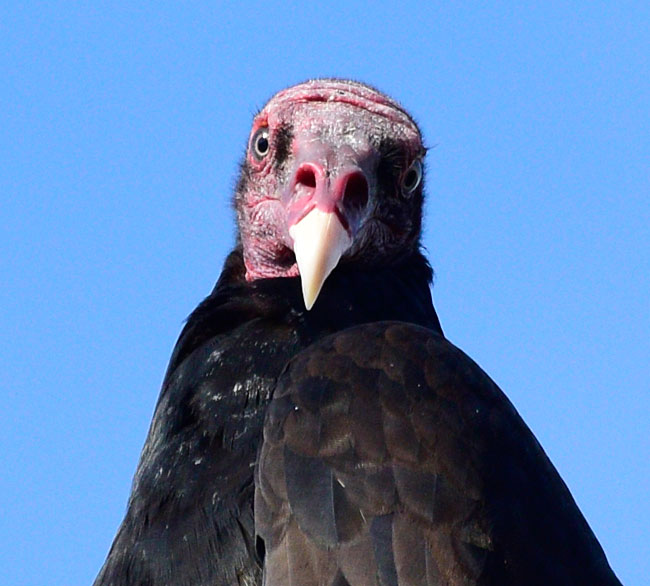
Hey, Camera Guy! You talking to me? A shot of a Colombian vulture with the Nikon 70-300mm telephoto lens, handheld, showcasing Nikon’s vibration reduction technology.
The 18-55mm is my default lens, and it stays on the camera most of the time. It used to be that the standard low-cost zoom lenses that camera manufacturers provided with their low-end cameras were mediocre. That’s not the case with Nikon’s 18-55mm lens. It does an excellent job, returning high contrast and sharp images.
The other thing I like about the 18-55mm Nikon lens is that it has Nikon’s VR feature. The idea is that it stabilizes the lens axis and there is less camera shake (which can kill a photo’s sharpness). I thought when I bought the camera that this was kind of a gimmicky feature, but it works and I like it. It delivers significantly sharper hand-held photos.
What I wasn’t expecting with the VR feature was just how well it worked from the saddle. In the past, I’ve taken photos while riding with my old D200 and the 24-120mm lens I used on it, and it was rare I captured photos that were sharp. With the D3300 and the 18-55mm lens, it’s rare that I get one that isn’t sharp. It’s almost as if Nikon designed this feature for motorcyclists.
Having a video capability in the D3300 was another feature I initially dismissed as a gimmick. All that changed on the CSC Inaugural Baja Run. I purchased the D3300 camera just prior to that ride. On our second day in Mexico I rode ahead of the group and filmed all of the riders as they came around a bend. When I viewed the video on my laptop later that night, I was blown away by how good it was. The VR feature in the 18-55mm lens worked amazingly well. The video looked as if the camera had been tripod mounted. It was all due to the VR feature. You can see the video I did for that trip on YouTube here:
https://www.youtube.com/watch?v=9HJ5M2owAzQ
All of the still photos in the above video were shot with the D3300 and the 18-55mm lens. When I saw the video, I knew I had purchased the right camera for my needs and I was very pleased with the results.
I used the D3300 camera’s video feature when filming the action in La Playa de Belén on the Colombia trip. I mentioned the La Playa de Belén video earlier; for easy reference, here’s the YouTube link to it:
https://www.youtube.com/watch?v=TFGYcz7uRMY
I also used the D3300 in the video mode on the ferry ride down the Magdalena River on our way to Mompox. I thoroughly enjoyed that ride, and every time I watch the video I remember how much fun it was. I can still feel the warm humid air and the river breeze, and I can still smell the fresh and sweet aromas of the mighty Magdalena. Like every day on our Colombia moto adventure, it was magnificent. Here’s the link to that video:
https://www.youtube.com/watch?v=cWhgrws5Djg
Okay, back to the lenses. Sometimes you see something that screams out for a wide angle lens, and on the Colombia trip I brought my Tokina 12-24mm lens with me for those occasions. I like that lens a lot because of its sharpness, high contrast, and overall construction quality. The photo magazines rated the Tokina 12-24mm as sharper than Nikon’s vaunted 12-24mm lens, which costs more than twice what the Tokina lens cost. I had used the 12-24mm a lot on my old D200 Nikon camera and I’ve had a lot of photos published with it in the “Destinations” pieces I write for Motorcycle Classics magazine.
The only issues with the Tokina 12-24mm were that it does not have the VR feature, and it won’t autofocus on the D3300. The VR thing was not much of an issue for me; getting a sharp image is a lot easier with a wide angle lens. The autofocus capability was a bit more significant. The D3300 needs lenses that have the autofocus motor in the lens instead of the camera body, and the Tokina 12-24mm lens does not. I’ve been spoiled by the autofocus feature. When I used the Tokina lens on this trip, I forgot to focus manually a few times. But when I got it right, I really got it right. I shot the photo on the cover of this book with the Tokina wide angle lens. That’s the photo of the bikes at the edge of a cliff in Barichara. It was great place and a great moment, and I preserved it with a great photo.
As an aside, last year Tokina introduced a replacement for their 12-24mm lens. It’s an 11-16mm lens (wow, even wider than the 12-24mm!), and it has the internal focusing motor so it will autofocus on the D3300. After the Colombia trip, I bought the Tokina 11-16mm lens. I’ve only tried a few shots with it so far. My initial impression is that it is not quite as sharp as the Tokina 12-24mm lens. We’ll see.
I brought my 70-300mm Nikon lens with me on the Colombia trip, too. It’s a big, heavy, and clunky lens and I vacillated on bringing it. I always tell people to travel light on these trips, and bringing the 70-300mm lens with me would run counter to that guidance. I decided to take it and I am glad I did.
I only mounted the 70-300mm on the camera twice while I was in Colombia, and on one of those two occasions, my subjects got away before I could get a good photo. That was when I photographed the iguanas I spotted while we were enjoying lunch in Magangué. On the other occasion, though, I was quicker (well, okay, to be honest, my subjects were slower). That’s when I photographed the vultures outside of Guane. The 70-300mm lens has the VR feature, and I captured some amazing shots of those big old Colombian vultures. Bringing the 70-300mm lens on this trip was the right decision.
I had circular polarizers with me for all three lenses. A circular polarizer filters out the white light and that makes the colors much more vibrant in outdoor shots. I left the polarizers on the lens, and I would remove them when I shot indoors, or at night, or when I used flash. They don’t take up much room, and they make a real difference on outdoor shots when the sun is shining. The circular polarizer is what made the sky such a rich and deep blue on this book’s cover. I like what they do.
I carried all of the above in a Tamrac Velocity 7X camera bag. The Tamrac bag has a sling that makes it easy to carry, but I didn’t carry the bag much. I’d just throw the whole enchilada (the Tamrac bag with the camera, the lenses, a spare battery, and the battery charger) in the Tourfella topcase. When I wandered around or when I was on the motorcycle, I’d take the D3300 with the 18-55mm lens and wear it hanging from my neck. It was my walking around and riding around camera and lens.
On the subject of video, I’ve already mentioned the stellar footage I captured with my D3300. You can’t use a DSLR camera like the D3300 for onboard video from the motorcycle (doing so would be too dangerous). I did capture some video in Colombia from the bike, though.
Unlike most folks, I don’t think much of the video camera most of my riding buddies use. That’s the Go Pro. I have a Go Pro, and I find the on-off button to be extremely unfriendly from a motorcyclist’s perspective. The Go Pro has a button that you push to turn the camera on, and then you push the same button again to turn it off. The problem is I can’t tell if the thing is on or off when I’m riding. It has a red light on the front of the camera, but you can’t see it if you have the camera mounted on your helmet.

My Midland XTC-300 helmet-mounted video camera. Note the large on-off switch on top of the camera. That switch makes it very easy to activate the camera, and to know when the camera is on or off. I greatly prefer this to a Go Pro video camera.
My video camera choice for filming from the motorcycle while on the move is the Midland XTC-300. I like that little video camera a lot and I’ve been using it for about 4 years. It captures high quality video and the on-off switch makes sense ergonomically. It’s a big slider switch on top of the camera and I can operate it while wearing my riding gloves. I don’t have to guess if it is on or off. If that big old slider switch is in the forward position, the camera is on, and if it is in the rear position, it is off. The two positions are nearly an inch apart, so it’s easy to know by feel (even through gloves) what the camera is doing.
Another thing I like about the Midland video camera is that it is small and light. It takes up very little storage space (I usually keep it in my jacket pocket), and when it is mounted on the left side of my HJC helmet, it is so light I forget I am wearing it.
The Midland’s advantages aside, I only shot a couple of videos with it on the Colombia trip. The first one was on a stretch of dirt road after leaving Zipaquira on our way to Honda. I mentioned that video earlier in this book; here’s the YouTube link for it again:
https://www.youtube.com/watch?v=Q63TvjKMpW8
The other video was rolling through a small Colombian town. That video is here:
https://www.youtube.com/watch?v=VDlP3EHm0Lc
I regret not getting more video of our riding in the mountains when we were passing the 22-wheelers on blind corners, and on the super-steep streets of towns like Zipaquira, Honda, and others. Truth be told, though, I had my hands full on those occasions.
I’ll mention my iPhone 6 only because I shot a couple of photos with it when I did not have my D3300 with me. I think the only time that happened was the night we left the Hotel Artepolis and rode in a tuk tuk into the center of Barichara. I would never leave on a trip like this and rely on a cell phone camera for my photos. As good as they are, a cell phone is no substitute for a real camera. Like they say, though, halitosis is better than no breath at all, and when I saw that church in Barichara that night, all I had with me was my iPhone.
The last two or three things I’ll mention in this chapter are my laptop and the two programs I use. As I mentioned at the beginning of this chapter, I have an HP Pavilion dv4. I know about as much about laptops as Donald Trump knows about courtesy, so I can’t tell you that I selected this one after I developed a set of requirements and carefully considered all of the options out there. My approach was less rigorous. I went to Costco and told the kid there I wanted something that was cheap, small enough to fit in a motorcycle saddlebag, and capable of running PhotoShop. A few minutes later I was the owner of an HP laptop. I’ve had this laptop for about three years, so it’s probably time for a new one. The thing has survived a lot of bouncing around in the topcase of my RX3, and it’s what I ‘m typing this book on right now.
For software, I use Pinnacle for video editing and PhotoShop for the still photos. Pinnacle is okay because it met my primary criteria (it was cheap and not too hard to learn). I use Adobe PhotoShop because it is the gold standard for photo editing. PhotoShop isn’t cheap because it has incredible capabilities (and because Adobe can get away with charging a third of what a new RX3 costs). I didn’t mind paying that kind of money for a software package because I use it for the photos I put in the CSC blog, the CSC maintenance tutorials, and my books. In other words, I paid top dollar because I know who my customers are. You and I both know that where you guys are concerned, only the best will do.
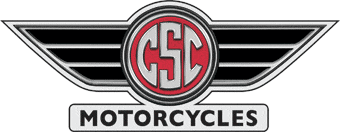





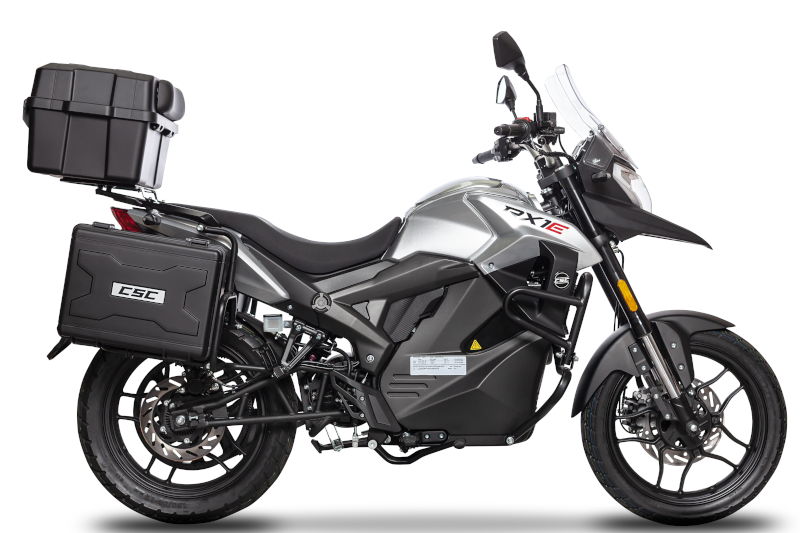 RX1E Electric Motorcycle
RX1E Electric Motorcycle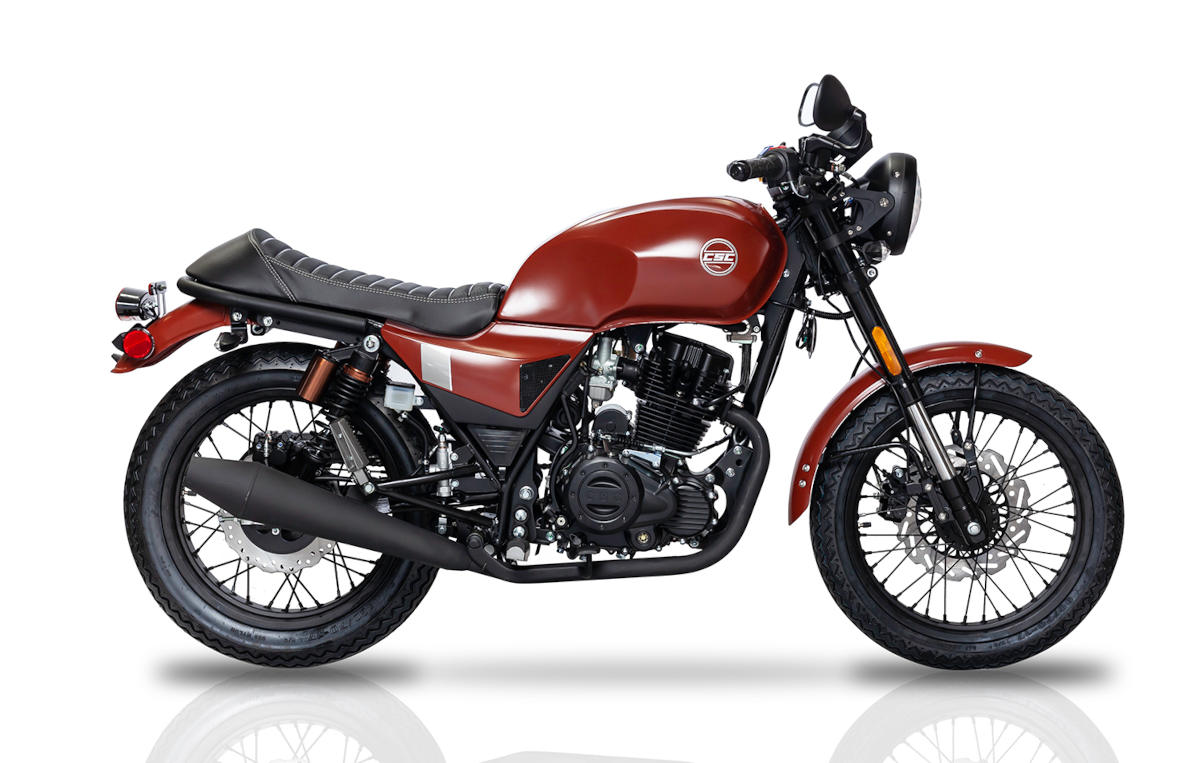 SG250 San Gabriel Cafe Racer
SG250 San Gabriel Cafe Racer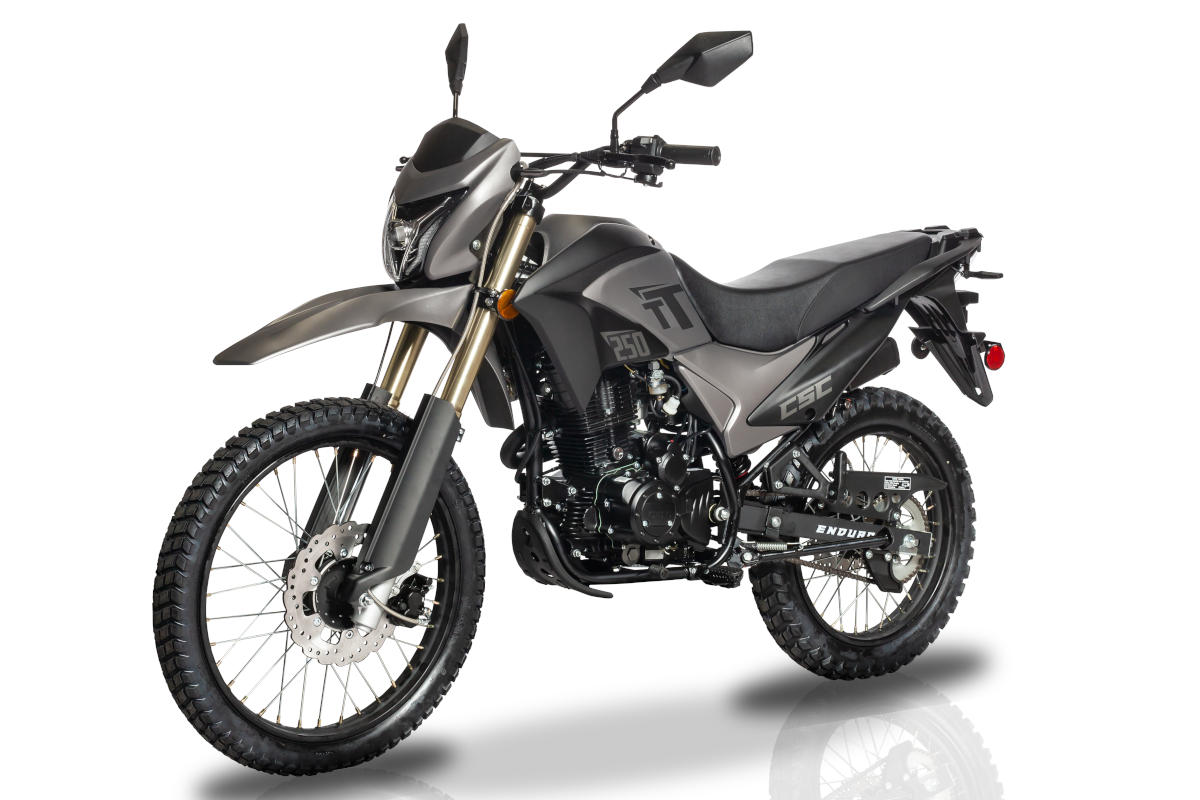 TT250 Enduro
TT250 Enduro